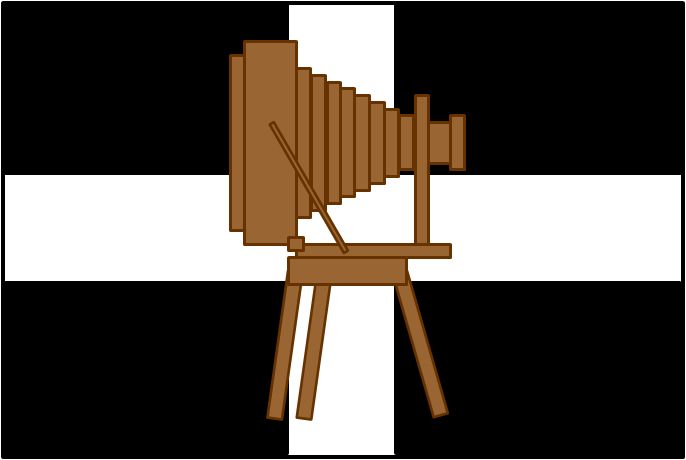Photographs taken 2010
Geevor Mine, as it is now, has a long history of mining on the site, and some of the earliest mining activities that have any documented evidence are those at Wheal Mexico. These records indicate mining at Wheal Mexico took place from at least sometime during the early 1700s, through to around the 1850s. After this time, access to the mineral lodes changed with newer mine companiess taking over, namely the North Levant Mine, and later, the Geevor Mine. These mines sank new shafts to reach deeper deposits, as the more accessible closer to surface deposits became exhausted.
Wheal Mexico is accessed from an area that has since been used for waste dumps from later mining operations, after some of the old workings had been filled in or used for waste disposal. The old Wheal Mexico adit system was re-discovered during 1994 to 1995 when shaft safety work was being carried out.

The track down to Wheal Mexico at Geevor Mine - looking out over
some of the old waste dumps
Considerable research was carried out into what remains of the records of the old Geevor Mine workings, to establish the extent of the original Wheal Mexico, and the underground tour now links many of the main access features to the mine, including the New Mexico Shaft (sometimes Mexico Shaft), Ladderway Shaft, Rock Shaft, and Old Mexico Shaft.

Additional adit entrance to New Mexico Shaft - part of the mid-1800s
Wheal Mexico mine system
(this mine entrance is not part of the
underground Wheal Mexico mine tour)
The underground tour begins at the "eastern" adit entrance to Wheal Mexico (which, in the above photo, is off to the left - the photo was taken looking roughly south-east). The tour then follows a mis-figured "U" shape, and emerges at the exit through a further "western" adit access.

The entrance to Wheal Mexico
You will be taken through the mine by an expert tour guide - likely an ex-miner from Geevor Mine...

Inside the adit - there is some older block-work around where the
old adit tunnel narrows

Along the adit and moving further in

The height varies where the adit has been hewn out of the rock

Mexico Shaft - complete with mock-up ladderway and ore kibble
(In
reality, these would have been in separate shafts, as there would
not have been room for both uses)
The above image was taken using flash - giving a very much artificial view of how the mine would have looked to a miner in the early 1800s. There would have been no electric light, and all work would have been by candlelight. Without flash, the same scene appears very different, with only small lights taking the place of candles...

The same view of Mexico Shaft as it would be seen by "candlelight" -
and eyes adjusted!

With only a candle attached to your hat by a lump of clay, you would
not see very far ahead!

The Ladderway Shaft - ladders were the only way of descending and
ascending mine shafts until "Man Engines"
were installed in some
mines, or men rode to the surface in ore kibbles - a very risky
business
One of the additional tunnels that are being worked on for possible inclusion on underground mine tours...

Looking along an extension adit, or level, towards Rock Shaft -
still being worked on

A closer look inside the level towards Rock Shaft, where safety work
continues
The above level returns to the main tour tunnel, via Windlass Shaft...

The returning extension adit, returning via Windlass Shaft
The access tunnels - still all technically adits - remain fairly small. Why excavate holes larger than you need for a miner to walk down with their equipment, the ore would likely be hauled to the surface in kibbles up the ore shafts.

Mine adits of the 1800s are not large! (They wouldn't have had mains
cables either of course!)
A lot of safety and stabilisation work has been carried out in Wheal Mexico to enable underground tours to take place, and this is particularly evident near the adit entrance and exit, where some solid modern timber-work can be seen...

The adit approaching the western exit to Wheal Mexico

Looking back down into Wheal Mexico from the exit

The "western" exit adit
Old Photographs
There are some fascinating old photographs on display at Geevor Mine of life underground, during both the late nineteenth century, and from more modern times, before the mine finally closed in 1990...

Taken using early flash photography - miners retiring rapidly by
candlelight, after charges have been set
(taken from a display
photograph at Geevor
Mine)

Looking up one of the excavated stopes from one of the modern Geevor
levels
(taken from a display photograph at
Geevor Mine)

Looking along one of the maze of levels in Geevor - note what looks
like a tunnel identity mark top left
(taken from a display
photograph at Geevor
Mine)
See also Geevor Mine and Geevor Mine - The Preserved Tin Mill


Connect with us, Like us and Follow us on Facebook!
PhotoFile Cornwall supports CoaST and Sustainable Tourism